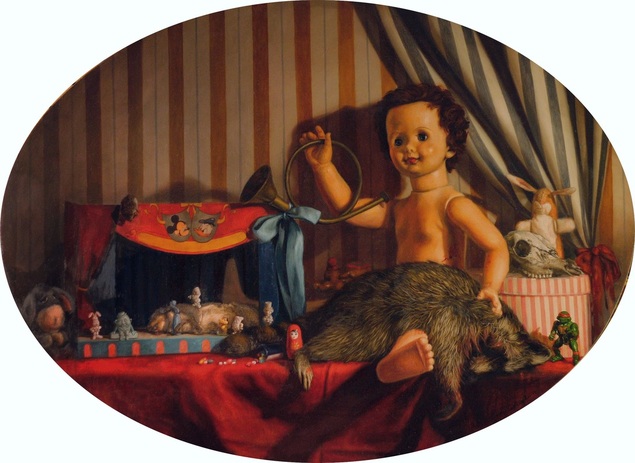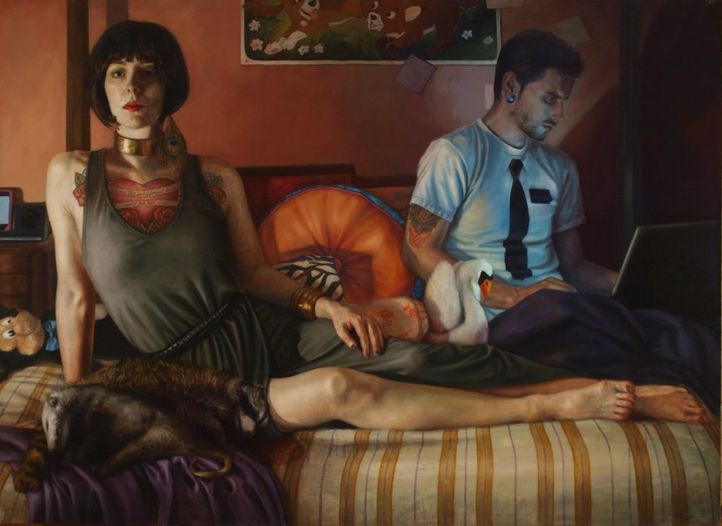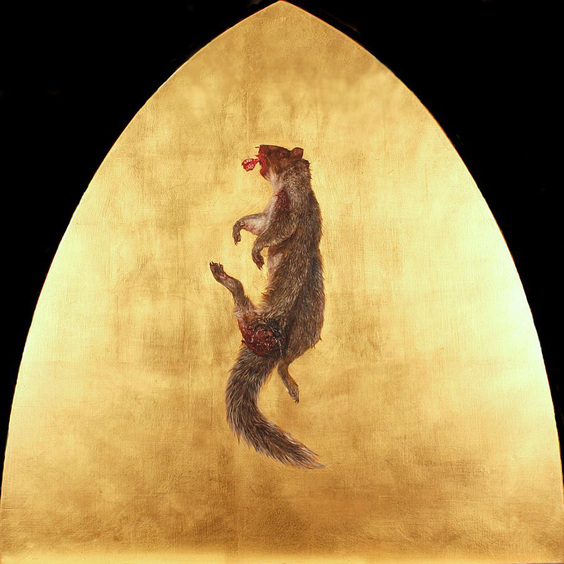CARA DeANGELIS
Cara DeAngelis was born in Fairfield County, Connecticut in 1985. She is a recipient of the CT Office of the Arts Fellowship Grant for 2012, as well as the Barbara Deming/Money for Women Grant. She has had full fellowships at both the Vermont Studio Center and the Prairie Center of the Arts.
In 2010 she was awarded residency at the Terra Foundation in Giverny France along with a Guggenheim travel grant. She is also a recipient of the Rudolph Zallinger Painting Award. In 2011, Cara graduated with her Master’s degree from the New York Academy of Art.
The main focus of her work for the past several years has been on the interplay between the Domestic and the Wild. This is embodied in her series on roadkill, which is presented through the rich and historically-loaded language of Still Life. The paintings have evolved to both emulate and satirize 17th century Hunting Still Lifes, using the roadkill in place of game animals. These works re-invent tropes used by the Flemish masters and give them a contemporary, political, and environmental perspective.
The inclusion of dolls and children’s toys in the roadkill paintings are used to symbolize nostalgia and the infantile. This creates a fascinating disparity between the two worlds, and also serves as a means of finding some humor in tragedy through the inherent absurdity of the comparison. Similarly, other works in the series satirize aristocratic portraiture. In these paintings, the dead animals take the place of privileged lap-dogs on the knees of patricians. These paintings also explore and question the role of wildlife in an increasingly industrialized society, and the place for them in what’s been now termed by some as a ‘Post-Natural Age’.
Website: Cara DeAngelis
In 2010 she was awarded residency at the Terra Foundation in Giverny France along with a Guggenheim travel grant. She is also a recipient of the Rudolph Zallinger Painting Award. In 2011, Cara graduated with her Master’s degree from the New York Academy of Art.
The main focus of her work for the past several years has been on the interplay between the Domestic and the Wild. This is embodied in her series on roadkill, which is presented through the rich and historically-loaded language of Still Life. The paintings have evolved to both emulate and satirize 17th century Hunting Still Lifes, using the roadkill in place of game animals. These works re-invent tropes used by the Flemish masters and give them a contemporary, political, and environmental perspective.
The inclusion of dolls and children’s toys in the roadkill paintings are used to symbolize nostalgia and the infantile. This creates a fascinating disparity between the two worlds, and also serves as a means of finding some humor in tragedy through the inherent absurdity of the comparison. Similarly, other works in the series satirize aristocratic portraiture. In these paintings, the dead animals take the place of privileged lap-dogs on the knees of patricians. These paintings also explore and question the role of wildlife in an increasingly industrialized society, and the place for them in what’s been now termed by some as a ‘Post-Natural Age’.
Website: Cara DeAngelis
Dolls and Roadkill IV. Oil on linen; 83.8 x 119.3 cm (33″ x 47″).
Woman with Roadkill IV. Oil on linen; 121.9 x 167.6 cm (48″ x 66″).
Ascension IV. Oil, tar, asphalt, and gold leaf on wood; 68.5 x 68.5 cm (27″x 27″).


